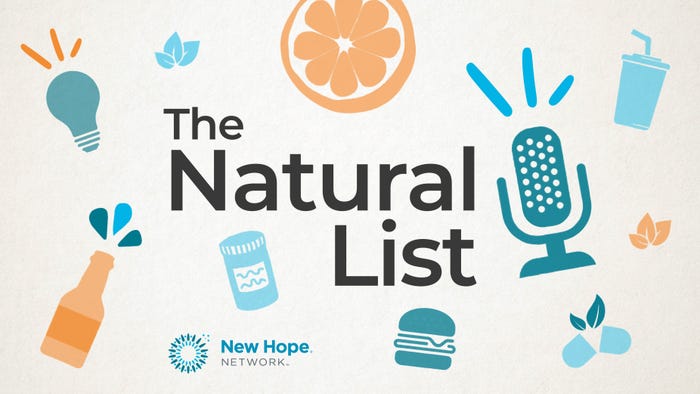How mission-based businesses are driving innovation
Did you miss the Spark Change Mission-Driven Business Community Event? If so, check out these key stats all about the growth of mission-driven businesses that underscore how, for today's consumers, purchasing is personal.

“Innovation” is a buzzword that is frequently tossed around when a new product rolls out, and it often refers to new flavors or new package sizes. Many brands and retailers are transforming what innovation can look like as they find exciting ways to address bigger issues—and shoppers are taking notice.
During the Spark Change Mission-Driven Business Community Event, Kathryn Peters, executive vice president of business development for SPINS, and Eric J. Pierce, vice president of business insights for New Hope Network, came together to discuss the future of mission-driven businesses and their connection to shoppers. Here are some of the insights they discussed during the session entitled “What's Next in Mission-Driven Business?”
Why should you care about mission-driven businesses?
At its core, mission-driven businesses are addressing matters that are bigger than any single person—it requires a community coming together with a shared goal. But there are businesses benefits as well. Consumers are looking for products and retailers that share their values or concerns, and they’re using their spending power to show support. This opens an opportunity for retailers and brands to differentiate themselves from competitors, establishing an emotional connection and loyal customer base in the process. For this growing segment of consumers, these purchases are personal.
What are consumers looking for?
Shoppers, especially those who gravitate toward natural products, still care about their wellness. Their lifestyle tenets—whether that’s vegan or clean eating—are still a driving force behind their purchases, but they’re bringing mission into the fold. During the webinar, Peters highlighted the five trends listed below that exemplify the intersection of mission and wellness.
1. Diversity is increasingly important.
Shoppers want to support businesses that are owned by members of groups that have historically faced oppression. They are researching companies to learn who’s behind the products and what certifications the business has. Peters looked at SPINS data looking at sales in the US Natural Enhanced Channel for a 12-week period ending in early August of brands participating in the KeHE’s DIVERSEtrade program to build a directional aggregate of performance and discovered:
Businesses with LGBT ownership and/or certified by the NGLCC grew 36%.
Minority-owned (BIPOC) and/or certified businesses grew 24%.
Businesses owned by women and/or certified grew 15%.
2. Plant-based market continues to see strong growth.
Between 2018 and 2020, sales of plant-based positioned products grew 11%, according to SPINS data. Consumers who choose plant-based items aren’t necessarily vegetarian or vegan; many are flexitarians who incorporate a plant-based meal or day’s worth of meals into their diets. Shoppers in the plant-based category choose these products for a variety of reasons, from their own health to concerns about animal welfare and environmental impact. According to SPINS data looking at sales in the US Natural Enhanced Channel for a 12-week period ending in early August, plant-based had strong gains:
Refrigerated plant-based milk grew 25% vs. animal-derived milk’s 9% growth.
Refrigerated plant-based yogurt grew 8% compared to animal-derived yogurt’s 1% growth.
Plant-based ice cream’s 27% growth was nearly identical to animal-derived ice cream’s 28% growth.
3. Responsible sourcing and third-party certifications are key.
Third-party certifications signal to consumers that the products they’re about to purchase were created responsibly, with a focus on what’s best for their workers, suppliers, customers, and the environment. Products with these certifications are proving to be powerful motivators for shoppers as over $74 billion has been spent over the last year in products with certifications listed below. Data from SPINS Natural Enhanced and Conventional Multi Outlet (powered by IRI) channels for a 52-week period ending in early August found that:
Products labeled for animal welfare grew 19%.
Products labeled organic grew 11%.
Products with a Certified B-Corporation label also grew 11%.
Fair Trade products grew 10%.
Certified non-GMO Project Verified products grew 10%.
4. Pay attention to products accomodating allergens and intolerances.
The Food Allergy Research and Education Center estimates that $19 billion comes from allergen-friendly foods each year. For customers with allergies or food sensitivities, these products have a direct effect on their health. Many consumers can’t afford to take a casual approach to shopping, and they’re looking for brands and products they can trust. SPINS data from a 12-week period for the SPINS Natural Enhanced channel ending in early August shows:
Products free of the top 8 allergens grew 18%.
FODMAP diet-friendly products grew 17%.
Products labeled allergen free grew 9%.
5. Shoppers are scouting out sustainable products.
Shoppers want to minimize the negative environmental effects of their purchases. Plastic, materials that can’t be recycled, and excessive packaging end up in landfills. SPINS data for the SPINS Natural Enhanced channel for the 52-week period ending in early August showed how shoppers are spending on sustainable products:
Bar shampoo and conditioners grew 40% while their bottled counterparts fell 13%.
Shelf stable non-carbonated water packaged in glass grew 19% and those in plastic decreased 2%.
Natural food storage bags and wraps rose 39%, compared to conventional’s 14% growth.
 Watch the full session on the Spark Change Swapcard platform here. Connect with SPINS in the Spark Change Product Discovery Zone and get up to speed on the upcoming Spark Change Modern Health Community Event happening Oct. 7.
Watch the full session on the Spark Change Swapcard platform here. Connect with SPINS in the Spark Change Product Discovery Zone and get up to speed on the upcoming Spark Change Modern Health Community Event happening Oct. 7.
About the Author
You May Also Like




